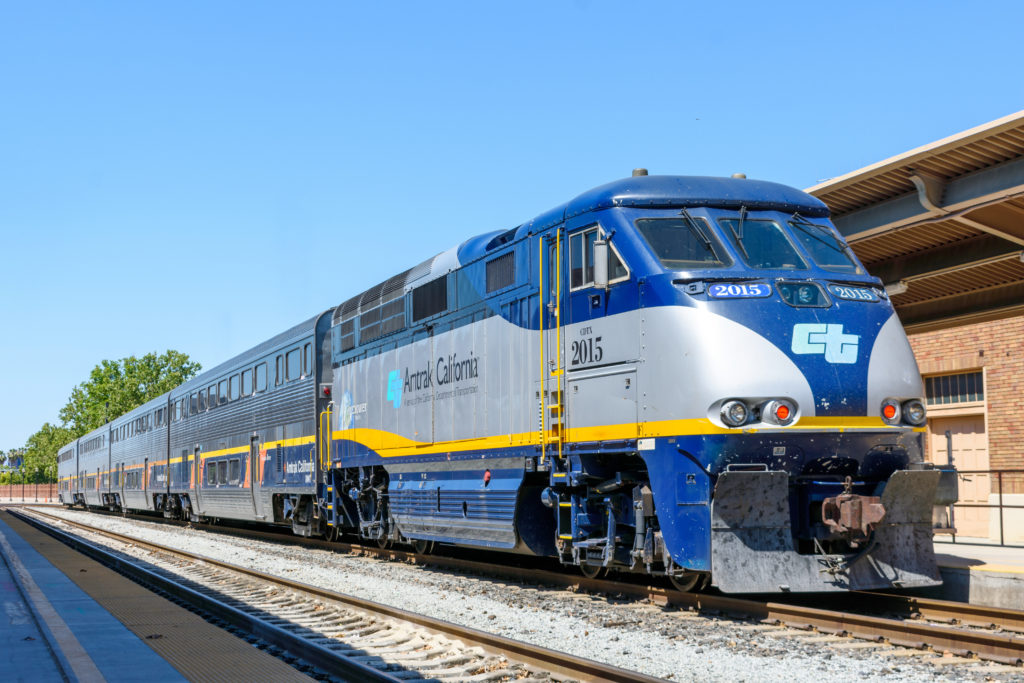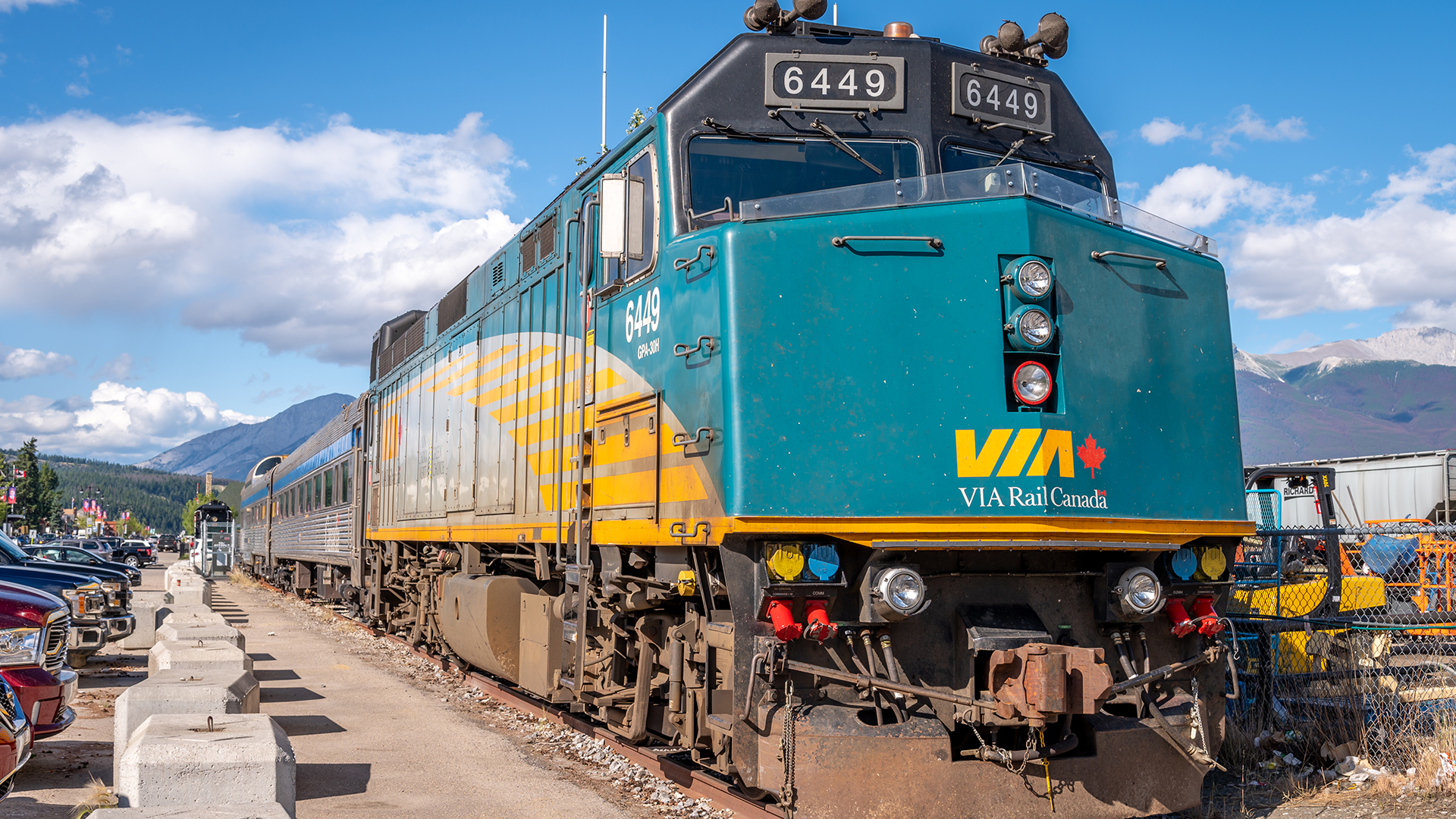
Canada can have a network of modern, swift, affordable and efficient passenger trains, like virtually every other industrialized nation. Yet it doesn’t.
In the 1970s, both the American and Canadian passenger train systems were taken over by their federal governments. Since then, Canada has slowly dismantled most of the VIA Rail system while Amtrak, the U.S. national train system, has been improved and stabilized. Amtrak’s growing network of regional rail corridors has been especially remarkable.
Greg Gormick, an analyst and policy adviser, has suggested that high-performance rail (HPR) is the best means to improve and expand our skeletal network of deteriorating rail service. Canadian politicians and advocates at both federal and provincial levels have made calls for high-speed rail (HSR) like France’s TGV and Japan’s bullet trains.
High-speed rail operates on all-new electrified lines built from scratch at a very high cost because it operates on tracks with no grade-crossings and must be separated from freight. High-performance rail, in contrast, incrementally improves all aspects of the existing service and builds on what little public funds have already been invested in it. Operating at progressively higher speeds with modern trains on tracks shared with freight trains, high-performance rail offers increased frequency, reduced travel times, better on-time performance, all-weather reliability and enhanced comfort and onboard amenities.
High-performance rail delivers improvements each step along a phased pathway to vastly improved service. Because it isn’t a “big bang” approach that takes years to deliver any benefits, high-performance rail is a practical and affordable “higher speed” option for today that may lead the way to building the more costly high-speed rail in the future.
Canada has not participated in the global move to high-performance rail. This failure is largely due to government interference and lack of political will. Passenger rail the world over requires subsidies for operating costs and capital improvements, but Canadian governments have cut back VIA since its founding in 1977. The Mulroney cuts of 1989 eliminated most trains in Western Canada and Atlantic Canada, and removed passenger service from the historic and well-used transcontinental route over the Canadian Pacific Railway (CPR). These cuts were decided in the Privy Council Office, not by VIA. In other countries, it was government commitment as much as technology and funding that helped to develop the high-performance rail networks.
In the U.S., high-performance rail is now at work on 15 corridors (see Table 1). Extensions are underway on several of these routes, and more are under construction or being planned.
The opportunities for high-performance rail in Canada are illustrated in Table 2, demonstrating its potential from coast to coast. High-performance rail trip times assume substantially upgraded track and signaling. Given its positive attributes, high-performance rail as solid conventional railroading should be a major form of interurban mobility in Canada.
Ironically, the first wave of equipment to implement a Canadian high-performance rail solution is on order for a wildly improbable scheme cooked up by a politically manipulated VIA. In 2011, the later-defrocked Peterborough MP Dean Del Mastro proposed to return trains between Toronto and Peterborough. The plan morphed into using a long-abandoned CPR backwoods line and extending it to Smiths Falls and to Ottawa, which bypasses the heavily populated Lake Ontario shoreline. The plan changed again when a former VIA Rail CEO made this impractical route the centrepiece of what VIA calls 160-km/hour high-frequency rail (HFR) for the Montreal-Ottawa-Toronto triangle. To increase its political attractiveness, VIA extended the HFR plan to Quebec City without increasing its cost estimate.
The stated objective of VIA’s proposal is separating passenger and freight traffic to eliminate conflicts that arise because of competition for track time and capacity, as well as differences in operating speeds. This is good in theory; however, implementing this would be expensive, time consuming and largely unnecessary. The key is to add capacity to existing lines incrementally and economically for both types of traffic. On high-performance rail routes around the world, freight and passenger trains share tracks at speeds of more than 200-km/hour.
Given constantly evolving estimates for California’s all-electric high-speed rail project and another linking Vancouver with Seattle, Portland and Eugene, and taking the lowest cost-estimates, a new passenger-only route for the Quebec-Windsor Corridor alone would cost more than $135 billion. Even applying VIA’s proposal to build only a single-track line with passing sidings instead of a double-track line that is standard for these types of projects, the cost wouldn’t decrease by much.
VIA wisely placed an order in 2018 with Germany’s Siemens Mobility for 32 five-car Venture trains each powered by a state-of-the-art Siemens Charger locomotive. Delivery starts in 2022. This $1.5 billion contract is part of a wave of North American orders for these 200-km/hour diesel-electric trains, 10 of which are already operating between Miami and West Palm Beach. Amtrak will use these train sets for high-performance rail routes in California, Missouri, Wisconsin, Illinois and Michigan.
In the end, it’s governance, not hardware or software, that’s the roadblock to improved high-performance rail service in Canada. Here, too, the proven approach is on display in daily service in the U.S., particularly California. Using a combination of federal and state funding to fuel locally managed, cross-jurisdictional projects, the joint powers authorities (JPAs) employed on three routes in the Golden State are incrementally revolutionizing rail transportation in one of the most car-centric regions of America.
The Capitol Corridor JPA describes this governance structure’s application on the San Jose-Oakland-Sacramento route as “a partnership among the six local transit agencies in the eight-county service area, which shares the administration and management of the Capitol Corridor.” The Capitol Corridor offers hourly daytime trains serving all stops on its 213-km route. This allows for convenient travel between all city pairs. The route has a high concentration of universities and colleges. Amtrak operates the trains on Union Pacific track that also carries numerous freights.

It’s time for Canadians to cease being taken in by rail schemes politicians dangle in front of voters and then drop. In its top-down, politically dominated form, VIA hasn’t worked out and never will. New JPA-style governance, new equipment, a new high-performance rail approach and political will are required to give Canada a network of modern, efficient and effective rail passenger services.
How likely is this to occur?
The Trudeau government’s 2020 speech from the throne announced that “to further link our communities together, the Government will work with partners to support regional routes for airlines. It is essential that Canadians have access to reliable and affordable regional air services. This is an issue of equity, of jobs, and of economic development. The Government will work to support this.”
On the subject of rail passenger service – high-performance rail or otherwise – there was not a word.
Meanwhile, high-performance rail investment and growth strategy continues south of the border. One month after Ottawa was mute about rail’s role in a post-pandemic Canada, the U.S. Federal Transit Administration awarded the Michigan Department of Transportation funding for further improvements to its diesel-powered, 176-km/hour Pontiac-Detroit-Chicago Wolverine Corridor.
The upgrade for faster more frequent train service is now approaching completion.
Amtrak’s 15-year growth proposal unveiled early this year would expand its regional routes substantially, adding about 160 communities to its system. Gormick has suggested that high-performance rail can be applied to an Ontario region with very poor public transportation as well. Given an approaching federal election, expect government announcements of more rail projects to come, but they will still be missing the mark.









